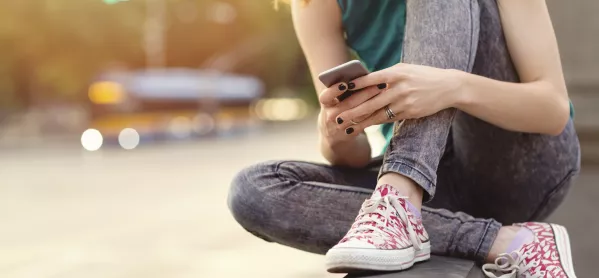- Home
- Sexting and sexual images: how schools should respond
Sexting and sexual images: how schools should respond

It seems like every new report about teens tells us there has been yet another rise in sexting and specifically youth-produced sexual images (YPSI). Blame is directed to several different locations, but I fear part of the problem is us: are the adults giving young people conflicting advice?
For example, part of the PSHE syllabus is teaching students that they should be body positive and proud of who they are - that they should not be held responsible for how other people see them.
However, another part of the PSHE programme is educating students to think carefully about what they share on social media, that there are some photos they shouldn’t post because it sends the wrong idea to people, that they may be opening yourself to hurtful comments.
- Quick read: A special report on sexting and grooming of young people
- Quick listen: How teens view sex and violence
- Want more articles like this? Join our Tes Teaching and Learning Facebook group
And as a mother, I often tell my daughter to not change for anyone. But I also have heard myself say, “You are not going out wearing that!”
Then you have the definition of a sexual photo. It is against the law to hold a sexual photo or video of a person under the age of 18, including pictures of themselves. The problem is what we call a sexual image is very different from what some young people think is.
Different views
Their profile picture could be an image on the beach in which they are in a swimming costume or in a sports bra and they are in a position that some may find proactive.
Compared to some of the images you see of Ariana Grande, Cardi B or Nicki Minaj and others, these are extremely tame. And yet, we warn young girls that they should not post pictures of themselves like that.
Teens are confused and we are not helping.
Context is key
Another good example was a recent discussion among my Year 10s about the Cardi B video for her song City Girls, which, if you haven’t seen it, features lots of women not wearing many clothes and twerking...a lot.
They couldn’t decide if this was empowering or degrading.
We need to think about this when we are made aware of sexual images involving one of our pupils. Most of the incidents that we are dealing with in school are images that pupils are uploading freely and openly on their own social media accounts.
Varied approach
It can be very hard to be non-judgemental with your teaching and investigation, but we need to help them to think before they post, consider why are they posting, and about control of their image or lack of control once the image is out there. We need to do this within the context of the mixed messages we have been sending and that they have been receiving.
We also need to carefully investigate, alongside support services, to ensure nothing else is going on, too.
Best practice when you are informed of a sexual image of a student is as follows:
1. Check the wellbeing of all involved. Some students will be mortified that you know, others will be fine and will not understand what the big problem is.
2. Do not ask for the image to be forwarded to you, but document what you have seen and who sent what to whom.
3. Assess if it is a grooming situation: do you think the image was forced, bullied or the result of blackmail? Your county’s safeguarding procedure should be followed, which would normally involve contacting the Multi-Agency Safeguarding Hub and/or the police. Explain to the child why you are doing this and support them.
4. If it is peer-on-peer sharing, as part of what you would call a healthy an age-appropriate relationship, document everything, check the image has been deleted and consider educating the pupils and parents.
5. If it is a case of pupils uploading openly on their own social media accounts, as I said earlier, education is needed but also further investigation in case something else is happening.
Each case needs to be considered individually but remember, they are children who will make mistakes, and we just need to help them when they do.
Ceri Stokes is assistant head (DSL) at Kimbolton School in Cambridgeshire. She tweets @CeriStokes
Keep reading for just £1 per month
You've reached your limit of free articles this month. Subscribe for £1 per month for three months and get:
- Unlimited access to all Tes magazine content
- Exclusive subscriber-only stories
- Award-winning email newsletters



